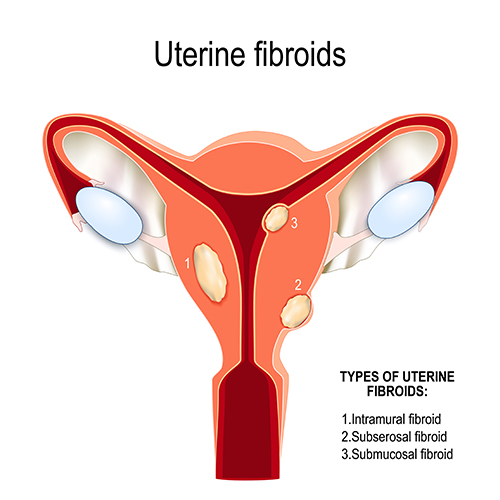Fibroids are non-cancerous growths (or tumours) that occur within the wall of the womb. They are also known as leiomyomas or myomas. Fibroid growth is dependent upon female hormones and therefore shrink after the menopause when hormone levels fall.
There are three main types of fibroids that are defined based on their location within the wall of the womb. Those that are located predominantly within the muscle of the womb are called intramural; those that grow towards the outer surface of the womb are called subserosal, and; those that grow towards the inner surface are termed submucosal. The submucosal variety cause the most symptoms.

Specific investigations for fibroids are often prompted by symptoms and signs. Pelvic examination often reveals an enlarged womb. Fibroids are most often diagnosed on ultrasound scan, which can also classify fibroids as being submucosal, intramural or subserous. For greater precision in identifying submucosal fibroids, ultrasound scan can be combined with the instillation of fluid into the cavity of the womb (known as Sonohysterography or Saline Infusion Sonography).
